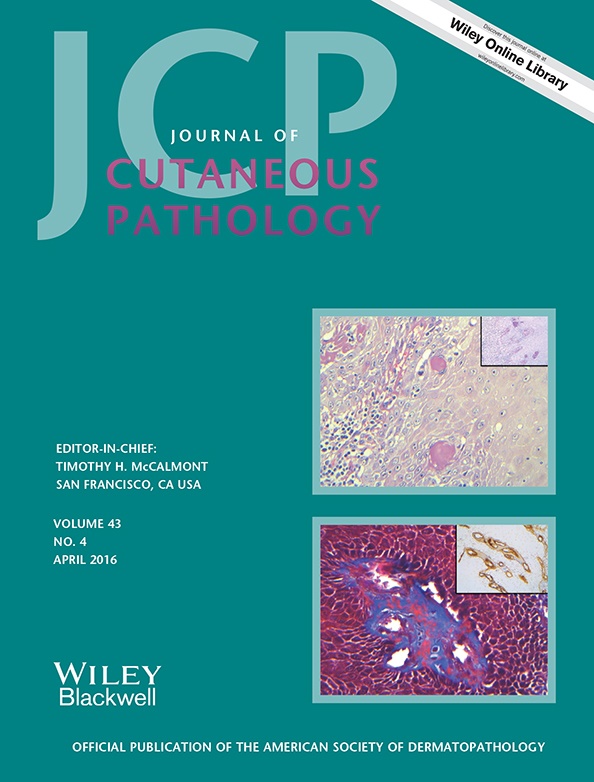Comparative histopathologic analysis of cutaneous extranodal natural killer/T-cell lymphomas according to their clinical morphology
Abstract
Background
Few studies have evaluated the histopathologic features of cutaneous extranodal natural killer (NK)/T-cell lymphoma (ENKTL), and the histopathologic spectrum of this disease according to its clinical morphology remains unclear.
Objective
This study investigated the differences in pathologic findings of cutaneous ENKTL depending on clinical morphology.
Methods
A total of 41 cases of cutaneous ENKTL were included. Skin lesions were classified according to clinical morphology as: (i) nodular lesions, (ii) cellulitis or abscess-like swellings and (iii) erythematous to purpuric patches. Histopathologic variables were compared between groups.
Results
Perivascular infiltration of tumor cells and vasculopathy in the dermis and subcutaneous layer were common microscopic findings irrespective of clinical morphology. Erythematous to purpuric patches were mainly composed of small-sized tumor cells, whereas medium- to large-tumor cells were predominant in lesions of other clinical morphologies. The density of tumor cell infiltration was significantly higher in cellulitis or abscess-like lesions or nodular lesions compared with erythematous to purpuric patches. A panniculitis-like pattern and angiocentricity were less common in patch lesions than in cellulitis-like swelling and nodular lesions.
Conclusion
There is a histopathologic spectrum of cutaneous ENKTL that is dependent on the clinical morphology.




